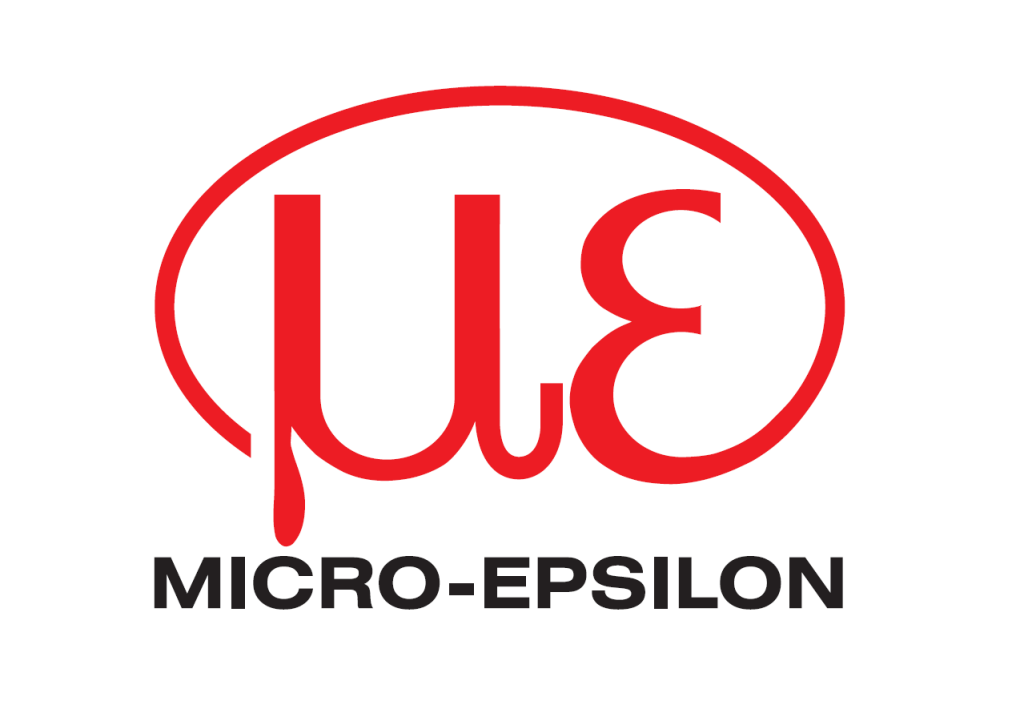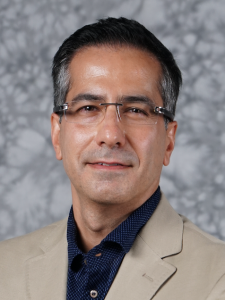
Farrokh Ayazi
Low-Power Inertial Measurement Chips for Health Informatics and IoT
Speaker Bio:
Farrokh Ayazi is the Ken Byers Professor in Microsystems in the School of Electrical and Computer Engineering at the Georgia Institute of Technology. He received the B.S. degree from the University of Tehran, in 1994, and the M.S. and Ph.D. degrees from the University of Michigan, Ann Arbor, in 1997 and 2000, respectively, all in electrical engineering. His main research interest is in the design of integrated Micro/Nano-Electro-Mechanical-Systems, with a focus on high-Q acoustic resonators and advanced inertial sensors. This has resulted in over 250 refereed publications, and 55 patents. Dr. Ayazi is an editor of the IEEE Transactions on Electron Devices, Elsevier Sensors & Actuators: A. Physical Journal, and a past editor of the IEEE/ASME Journal of Microelectromechanical Systems. He was the general chair of the 2014 IEEE Micro-Electro-Mechanical-Systems conference. Dr. Ayazi was the co-founder and CTO of Qualtré, a spin-out of his research laboratory that commercialized bulk-acoustic-wave silicon gyroscopes for high precision applications, and which was acquired by Panasonic in 2016.

David Blaauw
Sensors for the IoT
Speaker Bio:
David Blaauw is the Kensall D. Wise Collegiate Professor in Electrical Engineering and Computer Science at the University of Michigan. His research focus is on VLSI circuit design, with particular emphasis on the design of ultra-low power and high performance design for miniature sensor nodes. This has resulted in over 550 papers and 60 patents. Before joining the University of Michigan in 2001, he worked for Motorola, Inc. in Austin, TX, where he was the manager of the High Performance Design Technology group. He received his B.S. in Physics and Computer Science from Duke University in 1986, and his Ph.D. in Computer Science from the University of Illinois, Urbana, in 1991. David was the Technical Program Chair and General Chair for the International Symposium on Low Power Electronic and Design. He is an IEEE Fellow, a member of the ISSCC Technical Program Committee and the director of the Michigan Integrated Circuits Laboratory.
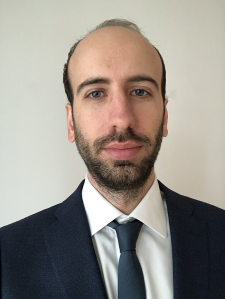
Alessandro Caspani
Capacitive pressure sensors in standard CMOS technology
Speaker Bio:
Alessandro Caspani received his M.Sc. in Electrical Engineering and Ph.d. in Information Technology from Politecnico di Milano, Milano, Italy, in 2011 and 2014 respectively. Since 2015 he is working at Infineon Technologies as concept engineer. His field of experience includes integrated electronics for MEMS technologies in acoustic and environmental sensing with focus on low-power applications.
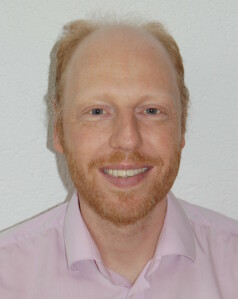
Gael F. Close
A Stray-field-Immune Magnetic Displacement Sensor with 1% Accuracy
Speaker Bio:
Gael F. Close received a B.Sc. (Eng.) in Electrical Engineering from the University of Liège, Liège, Belgium, in 2003 and M.S. and Ph.D. degrees in Electrical Engineering from Stanford University, in 2004 and 2008, respectively. From 2008 to 2011, he was with IBM Research, Zurich, Switzerland, developing phase-change memory chips. Since 2011, he has been with Melexis, Switzerland. As a Senior System Engineer, he led the technical development of the magnetic sensor product line. He has some 30 peer-reviewed publications about nano-electronic devices, circuit/system design, and sensor product development. He holds 1 patent, and is an IASCC Six Sigma Black Belt (2017).
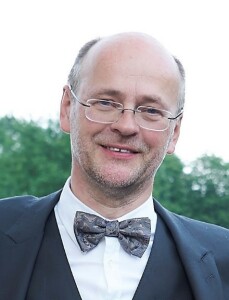
Bart Dierickx
101 ways to readout a photodiode
Speaker Bio:
Bart Dierickx obtained an MSc from the KU Leuven, in 1983, and then a PhD, in 1990, both in Electrical Engineering. Starting as a CCD designer at the KU Leuven/ESAT, he then moved to IMEC in 1984, where he started working on CMOS image sensors. Apart from the working on image sensors, he has also done research on deep-cryogenic electronics, 1/f and RTS noise, and radiation hardness. In 2000, be founded FillFactory and became its CTO. In 2006 he founded Caeleste and has been its CTO ever since. He is the author of 150+ papers and holds 40+ patents in the image sensor domain.
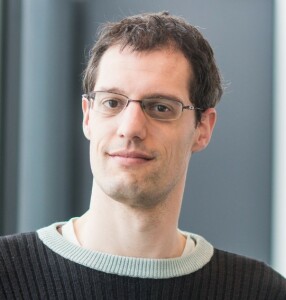
Nick Van Helleputte
IC design techniques and architectures for non-invasive health monitoring with PPG
Speaker Bio:
Nick Van Helleputte received the MS degree in Electrical Engineering in 2004 from the Katholieke Universiteit Leuven, Belgium. He received his Ph.D. degree from the same institute in 2009 (MICAS research group). His PhD research focused on low-power ultra-wide-band analog front-end receivers for ranging applications. He joined imec in 2009 as an Analog R&D Design Engineer. He is currently R&D manager of the Connected Health Solutions group. His research focus is on ultra-low-power circuits for biomedical applications. This has led to over 50 peer-reviewed papers, and to the design of several analog and mixed-signal ASICs that have been used in commercially-available wearable and implantable healthcare applications. He is an IEEE member and has served on the technical program committees of the VLSI circuits symposium and ISSCC.

Patrick P. Mercier
Energy-Efficient Power Management Circuits for IoT and Wearable Devices
Speaker Bio:
Patrick Mercier is an Associate Professor of Electrical and Computer Engineering and co-founder/co-director of the Center for Wearable Sensors at UC San Diego. He received his B.Sc. degree from the University of Alberta, in 2006, and the S.M. and Ph.D. degrees from MIT in 2008 and 2012, respectively. His research interests include the design of energy-efficient mixed-signal systems, RF circuits, power converters, and sensor interfaces for wearable, medical, and mobile applications. This has led to over 110 peer-reviewed papers and two co-edited books. He has received numerous awards, including the 2010 ISSCC Jack Kilby Award for best paper. He is an Associate Editor of the IEEE Transactions on Biomedical Circuits and Systems and the IEEE Solid-State Circuits Letters, and is a member of the ISSCC, CICC, and VLSI Technical Program Committees.

Michiel Pertijs
Smart Ultrasound Probes: Going Digital in the Probe Tip
Speaker Bio:
Michiel A. P. Pertijs received the M.Sc. and Ph.D. degrees in electrical engineering (both cum laude) from Delft University of Technology, Delft, The Netherlands, in 2000 and 2005, respectively. From 2005 to 2008, he was with National Semiconductor, Delft, where he designed precision operational amplifiers and instrumentation amplifiers. From 2008 to 2009, he was a Senior Researcher with imec / Holst Centre, Eindhoven, The Netherlands. In 2009, he joined the Electronic Instrumentation Laboratory of Delft University of Technology, where
he is now an Associate Professor. He heads a research group focusing on integrated circuits for smart ultrasound devices. He has authored or co-authored two books, four book chapters, 15 patents, and over 120 technical papers. Dr. Pertijs served as an Associate Editor of the
IEEE Journal of Solid-State Circuits (JSSC). He is a member of the technical program committee of the European Solid-State Circuits Conference (ESSCIRC), and also served on the program committees of the International Solid-State Circuits Conference (ISSCC) and the
IEEE Sensors Conference. He has received several awards, including the ISSCC 2005 Jack Kilby Award and the JSSC 2005 Best Paper Award. In 2014, he was elected Best Teacher of the EE program at Delft University of Technology.
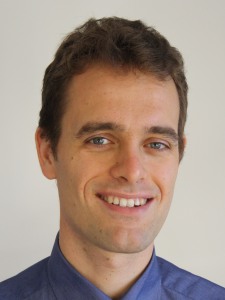
Martijn Snoeij
Precision Fluxgate Magnetic Sensors for Current and Position Sensing
Speaker Bio:
Martijn Snoeij received his M.Sc. degree and Ph.D degree from Delft University (The Netherlands) in 2001 and 2007, respectively. In 2007, he joined Texas Instruments in Germany where he is a senior analog circuit designer. He has worked on a range of precision analog IC designs that include a precision fluxgate magnetic sensor, CMOS analog sensor front-ends, chopper-stabilized instrumentation amplifiers as well as bipolar amplifiers with JFET inputs. He also has been actively involved in IC process development for precision circuitry and sensors. Dr. Snoeij has authored or co-authored 18 IEEE papers and holds 12 patents.
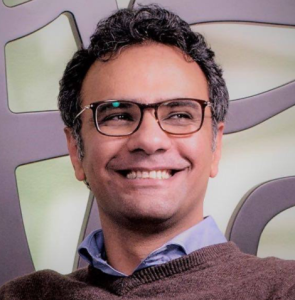
Kamran Souri
High-Resolution Temperature Sensors for State-of-the-Art MEMS Frequency References
Speaker Bio:
Kamran Souri received his M.Sc. (cum laude) and Ph.D. from the Electrical Instrumentation Laboratory, Delft University of Technology, in 2009 and 2016, respectively. In 2014 he joined SiTime Corp., Santa Clara, CA, USA, where he worked on the design of MEMS-based frequency references. In 2017, Dr. Souri started SiTime’s design center in Delft, where he is currently the Director of Circuit Design Engineering. His research interests include the design of low-power, energy-efficient sensor interfaces, data converters and precision analog circuits. He has authored or co-authored over 20 peer-reviewed scientific papers, one book, and holds several U.S. patents. For his Ph.D. research, Dr. Souri was awarded the IEEE Solid-State Circuits Society Pre-doctoral Achievement Award, in 2013.
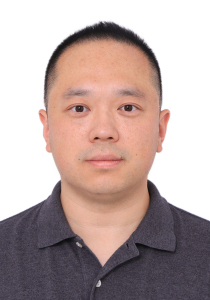
Zhichao Tan
Energy-efficient CMOS humidity sensors
Speaker Bio:
Zhichao Tan (Senior Member, IEEE) received the B.Eng. degree from Xi’an Jiaotong University, Xi’an, China, in 2004, the M.Eng. degree from Peking University, Beijing, China, in 2008, and the Ph.D. degree from Delft University of Technology, Delft, The Netherlands, in 2013.
He was a Staff IC Design Engineer working on low-power high-precision analog/mixed-signal circuit design with Analog Devices Inc., Wilmington, MA, USA, from 2013 to 2019. In 2019, he joined Zhejiang University, Hangzhou, China, as a Faculty Member. He holds 5 U.S. patents and authored or coauthored more than 40 technique papers. His current research interests are in the areas of energy-efficient sensor interfaces, precision analog circuits, and ultralow-power analog-to-digital converters (ADCs).
Dr. Tan is currently an Associate Editor of the IEEE SENSORS JOURNAL. He served as an Associate Editor for the IEEE TRANSACTIONS ON CIRCUITS AND SYSTEMS I: REGULAR PAPERS and IEEE TRANSACTIONS ON INDUSTRIAL ELECTRONICS. He was the a TPC Member of IEEE Asian Solid-State Circuits Conference and IEEE Sensors Conference. He was the Chair of IEEE Industrial Electronics Society Technical Committee on MEMS and Nanotechnology from 2019 to 2020.
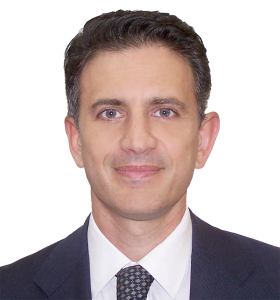
Prof. Massimo Alioto, Ph.D.
Always-On Sensing Systems Solely Powered by Renewable Energy for Sustainable Scaling to the Trillions
Speaker Bio:
Massimo Alioto is a Professor at the ECE Department of the National University of Singapore, where he leads the Green IC group, the Integrated Circuits and Embedded Systems area, and the FD-fAbrICS center on intelligent&connected systems. Previously, he held positions at the University of Siena, Intel Labs – CRL (2013), University of Michigan - Ann Arbor (2011-2012), University of California – Berkeley (2009-2011), EPFL - Lausanne.
He is (co)author of 330+ publications on journals and conference proceedings, and four books with Springer. His primary research interests include ultra-low power and self-powered systems, green computing, circuits for machine intelligence, hardware security, and emerging technologies.
He is the Editor in Chief of the IEEE Transactions on VLSI Systems, Distinguished Lecturer for the IEEE Solid-State Circuits Society, and was Deputy Editor in Chief of the IEEE Journal on Emerging and Selected Topics in Circuits and Systems. Previously, Prof. Alioto was the Chair of the “VLSI Systems and Applications” Technical Committee of the IEEE Circuits and Systems Society (2010-2012), Distinguished Lecturer (2009-2010) and member of the Board of Governors (2015-2020). He served as Guest Editor of numerous journal special issues, Technical Program Chair of several IEEE conferences (ISCAS 2023, SOCC, PRIME, ICECS), and TPC member (ISSCC, ASSCC). Prof. Alioto is an IEEE Fellow.


